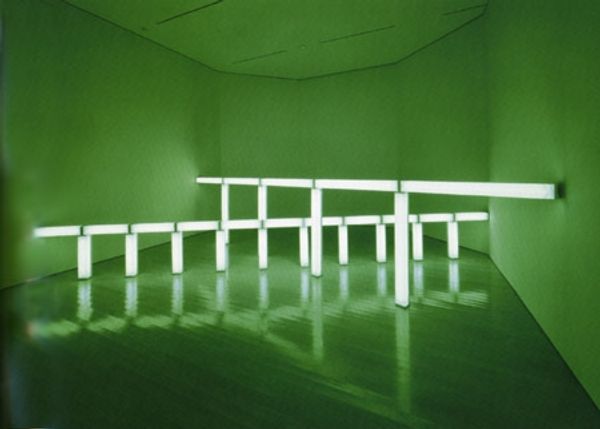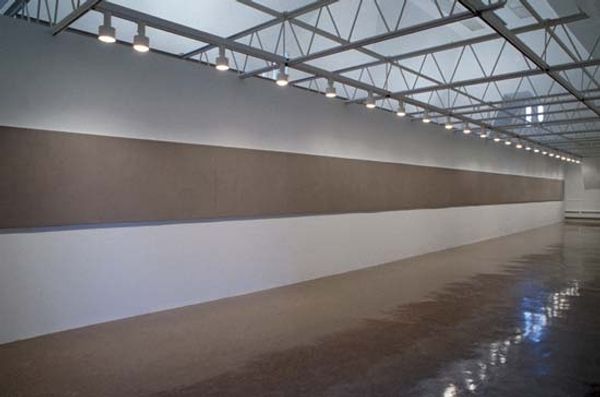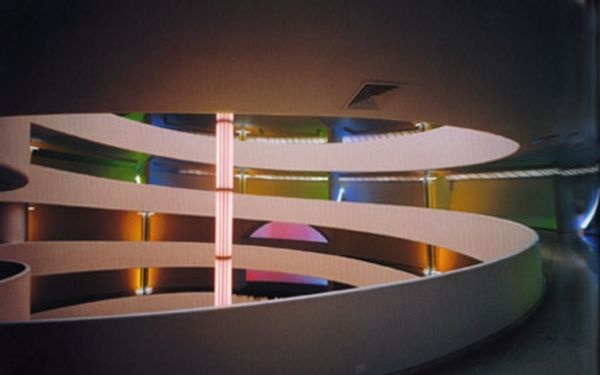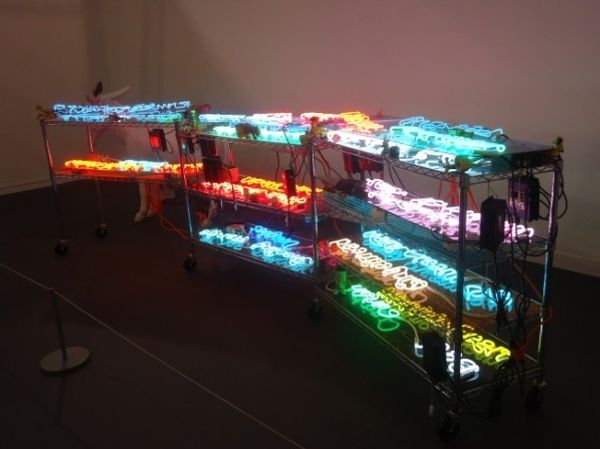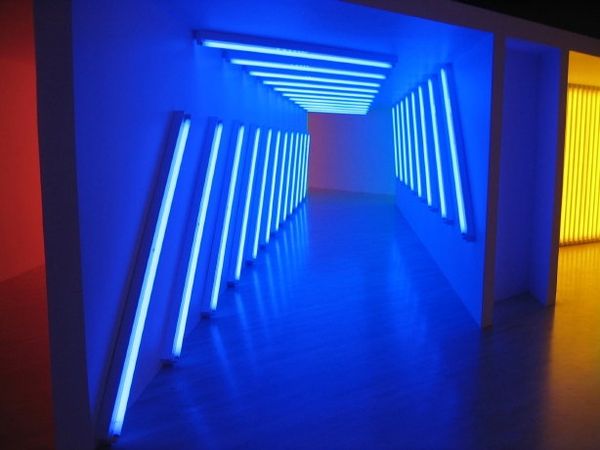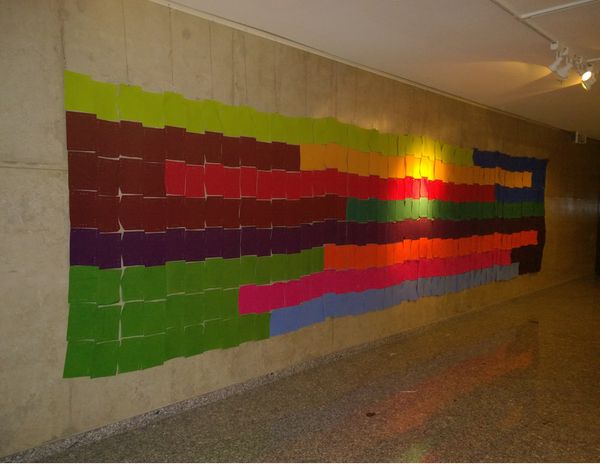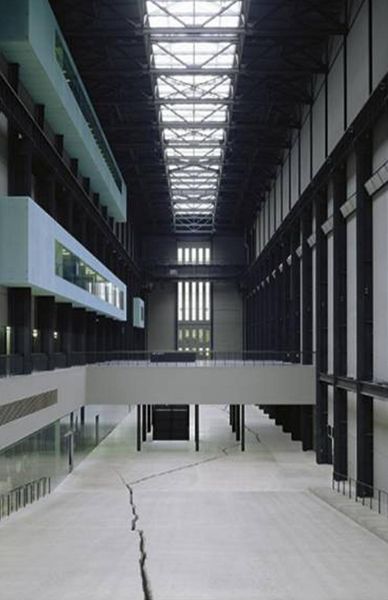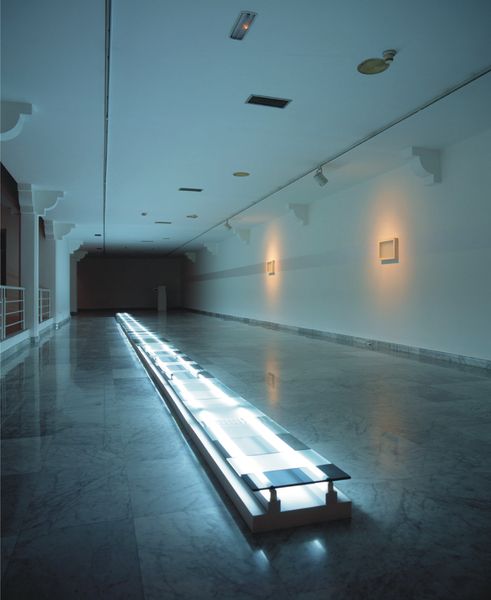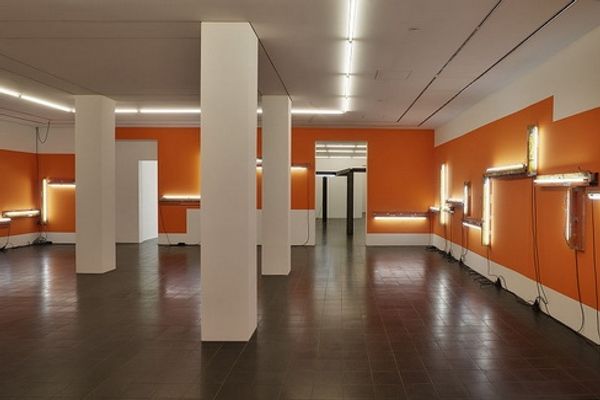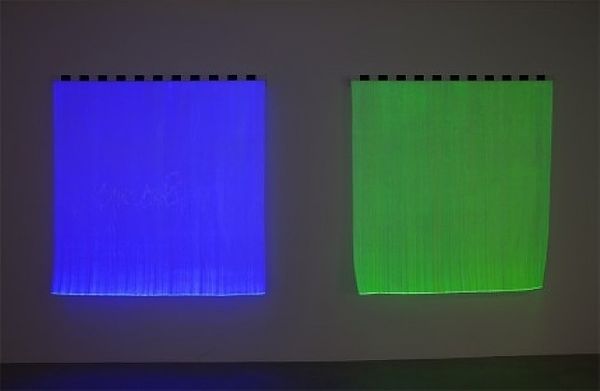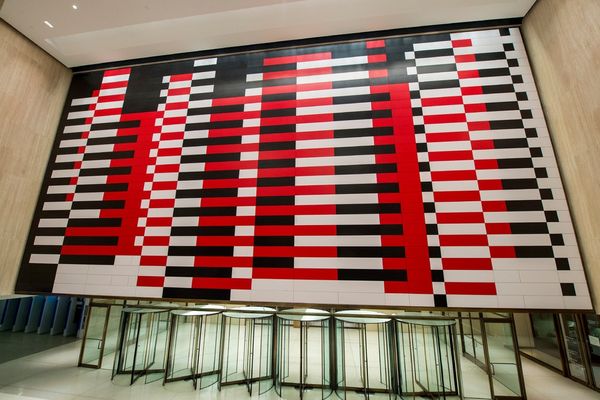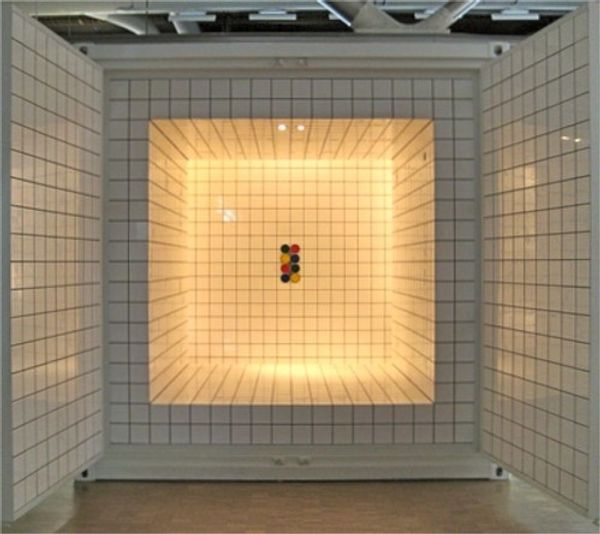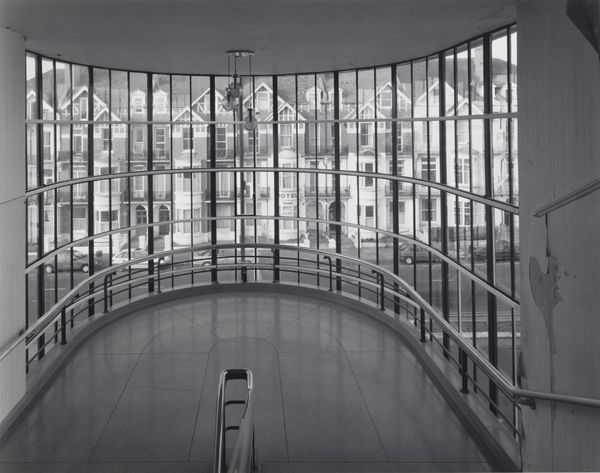
installation-art, architecture
#
light-and-space
#
conceptual-art
#
minimalism
#
geometric
#
installation-art
#
green
#
architecture
Copyright: Dan Flavin,Fair Use
Editor: Right, let's talk about Dan Flavin's "Untitled (to you, Heiner, with admiration and affection)" from 1973, an installation piece. I find it really striking how this line of green fluorescent light tubes transforms the architecture of the space. It's almost jarring, a complete intervention. What do you see in this piece, particularly in relation to how it engages with the viewer and its location? Curator: This is where the institutional framework becomes so critical. Flavin, a minimalist, actively challenged traditional notions of sculpture. He wasn't interested in creating self-contained objects; rather, his fluorescent light works radically changed how we understand and experience art within specific spaces. This piece doesn’t just occupy space; it defines and alters it, forcing a dialogue between the architecture and the viewer’s perception. What kind of statement do you think Flavin might be trying to make about the commodification or display of art by installing commonplace objects in institutional environments? Editor: I hadn’t really thought of it that way – the critique of art institutions being implicit. So, placing an everyday object, fluorescent lighting, in a gallery actually provokes the viewer to think about the socio-economic conventions around artistic display? Is that fair? Curator: Precisely! Think about who "Heiner" is - likely a gallerist or art world personality. The dedication itself points to the entanglement of artistic creation with the art market and its key players. It becomes difficult to divorce art from its economic and social context in Flavin’s work. Do you find this aspect compelling, or does it detract from the aesthetic experience for you? Editor: That really reframes the experience. I guess I initially saw it as purely an aesthetic statement, this manipulation of light and space, but the layer of institutional critique definitely gives it more depth. I am still interested in the color and light but your focus encourages another perspective. Curator: Absolutely, and appreciating art is always about layering those different viewpoints and understanding that historical and social conditions will invariably influence art and our understanding of it. Editor: Thanks. Now, when I encounter light installations, I am certain to look beyond their appealing and playful surfaces.
Comments
No comments
Be the first to comment and join the conversation on the ultimate creative platform.
